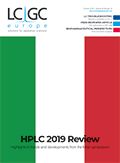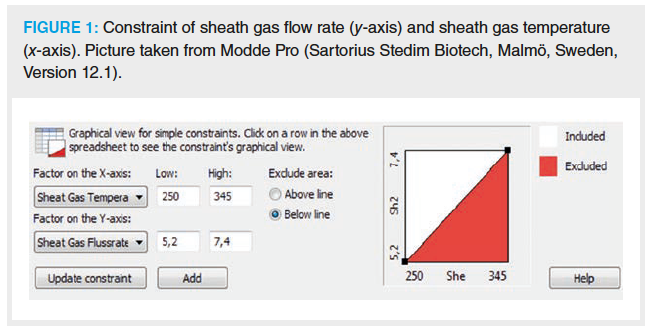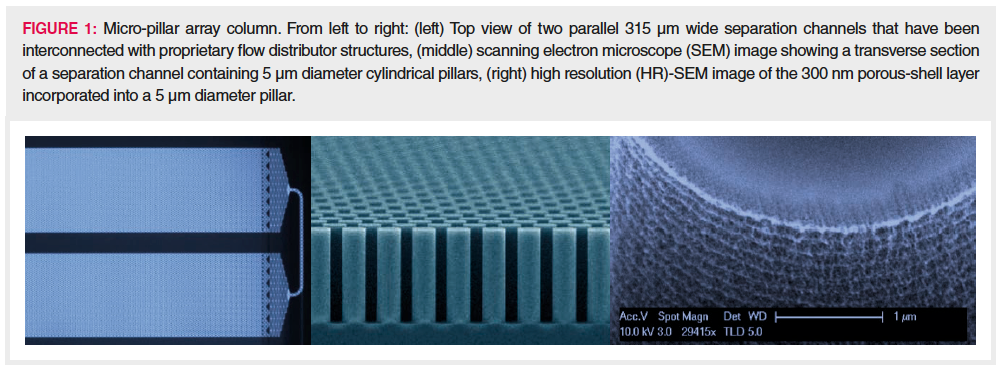Petroleum Pollution Analysis with Ramped Pyrolysis GC–MS
LCGC Europe
LCGC Europe spoke to Zhanfei Liu from the Marine Science Institute at the University of Texas at Austin, Texas USA, about the advantages of ramped pyrolysis GC–MS to analyze petroleum pollution from the Deepwater Horizon oil spill.
LCGC Europe spoke to Zhanfei Liu from the Marine Science Institute at the University of Texas at Austin, Texas, USA, about the advantages of ramped pyrolysis GC–MS to analyze petroleum from the Deepwater Horizon oil spill.
Q. You recently developed a method using ramped pyrolysisâgas chromatography–mass (PyâGC–MS) spectrometry to analyze petroleum pollution related to the Deepwater Horizon oil spill (1). How did this project arise?
A: Understanding the chemical composition of oil residues is essential for the oil-spill community, response team, and decision makers because the chemistry is related to evaluating toxicity of oil in environments and developing the appropriate response and remediation strategies. The traditional analytical tools for hydrocarbon analysis, mainly GC–flame ionization detection (FID) and gas chromatography mass spectrometry (GC–MS), are rugged in the quantitative perspective, and have long been applied in oil spill research. Unfortunately, GC–FID and GC–MS can only quantify a small fraction of hydrocarbons in crude oil, not to mention oil residues on a molecular level. Take the Deepwater Horizon oil as an example, only less than 25% of the crude is GC amenable (2). This fraction dramatically decreases with weathering in environments by processes such as biodegradation and photooxidation, forming unresolved complex mixture (UCM) as frequently observed in GC–FID spectra. Advanced mass spectrometry, such as Fourierâtransform ion cyclotron resonance mass spectrometry (FTâICRâMS), offers superb resolving power and greatly expands the analytical window to include a variety of polar compounds formed during the oil weathering, such as oxygenated hydrocarbons (2,3). However, this technique is not quantitative, and samples need to be in a solution before the analysis, which may not always be possible for highly weathered oil, such as those hardened tars often found along beaches. To further oil spill science, therefore, there is a need to develop new analytical techniques to expand the analytical window for crude oil and residues. My laboratory has been developing and applying the PyâGC–MS technique after the Deepwater Horizon oil spill, funded by the Gulf of Mexico Research Initiative through the DROPPS (Dispersion Research on Oil: Physics & Plankton Studies) consortium.
Q. Why did you decide to use ramped pyrolysis-gas chromatography–mass spectrometry? What advantages does it offer compared to other techniques?
A: Ramped Py-GC–MS offers a unique angle to interrogate the chemical composition of oil and oil residues, providing many advantages that other techniques cannot offer, from sample pretreatment to expanded analytical window. For example, the only pretreatment needed for an oil residue sample is freeze-drying. The sample can then be directly pyrolyzed. In comparison, the steps for regular hydrocarbon analysis in an oil residue are tedious and time-consuming, and include freeze-drying, extraction using organic solvent, oil fractionation using chromatographic columns, and condensation using a rotary evaporator before GC–FID or GC–MS analysis. If relatively low temperatures, less than 300 °C, are used in the pyrolyzer the same quantitative data on hydrocarbons, including steranes and hopanes, would be obtained with the GC–MS component as those from routine GC–MS analysis, but without the pretreatment. More importantly, PyâGC–MS can offer insights into chemical composition of highly weathered oil, such as the resin and asphaltene components, through pyrolyzing the samples at high temperatures, say 350–650 °C. The fragments produced under high temperature in the pyrolyzer can be analyzed through GC–MS analysis, and thus the chemical structures of highly weathered oil, analogous to putting the puzzle pieces together, can be pinpointed. For example, the high-temperature pyrolysis generated a large quantify of long-chain n-alkanes/1-alkenes in the Deepwater Horizon tar samples (1). This clearly confirms that the asphaltenes contain a high fraction of aliphatic components, and that the alkyl tails connected to aromatic centres are long. This type of molecular information in highly weathered oil cannot be obtained through any other techniques. Certainly, you can get a quantitative idea about carbon functionalities using nuclear magnetic resonance (NMR) or Fourier-transform infrared spectrometry (FT-IR), but not a molecular level of information. Another advantage is that the CO2 peak in the GC–MS spectrum for a weathered oil sample can be seen, because during the cracking process the oxygen atom in weather oil will be released mainly in the form of CO2 (CO is another component, but minor). Therefore, based on the peak area of CO2, the amount of oxygen in a highly weathered oil residue can be estimated.
Q. You used both bulk pyrolysis and thermal splicing pyrolysis in this project. Can you explain these two approaches and what they were used to investigate?
A: In this technique there are basically two modes you can use: bulk pyrolysis and thermal slicing pyrolysis. In the bulk pyrolysis, a very short GC column, 2.5 m, and a ramped temperature programme for pyrolysis are used, so individual compounds cannot be separated. As such, a bulk pyrogram is obtained with temperature against ion intensity. The bulk pyrogram offers a general idea of the distribution of pyrolysates with temperature. For all the oil samples we have analyzed, including crude and residues, there are basically two “humps” in the pyrogram, one at the low temperature range from 100–300 °C, and the other at 300–600 °C. This is expected as the low temperature hump represents the volatile fraction of oil and the high temperature the weathered oil components such as asphaltenes. However, it turned out that the ratio of these two humps is proportional to the weathering degree of oil, based on the wet-chemical analysis. In other words, the hump ratio can be used to examine the extent of weathering to oil samples in an oil spill, as an easy and quick method. The bulk pyrogram can also be used to inform the thermal slicing pyrolysis, or the temperature ranges to be selected for pyrolysis on a molecular level.
In the thermal slicing mode, the pyrolysates are condensed in a cryotrap between the pyrolyzer and GC–MS system during the pyrolysis at a certain temperature range or slice. After the sample is lifted out of the furnace, the pyrolysates are heated, eluted through the GC column (30 m length), and on to the MS system. When this GC–MS run is done, the sample is re-dropped to the furnace and the process is repeated for a second slice, and on and on until all pre-selected slices are finished. At the end, you will get consecutive GC–MS spectra at different thermal slices. For the oil and oil residues, there are two distinct temperature zones in terms of the pyrolysis: thermal desorption and cracking zones. In the thermal desorption zone (50–370 °C), not surprisingly, there are essentially no cracking products detected, so all compounds in this zone belong to intact hydrocarbons. Individual hydrocarbons in this zone can be used for quantitative analysis, similar to those from traditional GC–FID and GC–MS analysis, but without the need for pretreatment. In addition, the thermal slicing data (which compounds occur in which thermal slice [or in what percentages]) can be used to describe the matrix effect of oil weathering in a semiquantitative way. It has been well documented that some intact hydrocarbons are sealed or encapsulated in oil matrix or asphaltenes to prevent further degradation (4), but this is difficult to quantify. Thermal slicing offers a way of doing just this, as one can convert the temperature data to activation energy following a recent computing method (5). We are still working on this. The cracking zone (370–650 °C) offers data on the small fragments from the cracking of large or polar hydrocarbons, and this data can be used to pinpoint the original structure of those components, which are otherwise difficult to analyze. For example, we found the pyrolysates in this zone are dominated by long-chained n-alkanes/1-alkenes as compared to small aromatics, confirming the highly aliphatic nature of the weathered Deepwater Horizon oil.
Q. What were the main analytical challenges you had to overcome?
A: To quantify the hydrocarbons in the thermal desorption zone for oil residues, we needed to establish an external standard calibration curve. However, we found that the small hydrocarbon standards, such as n-alkanes C8-C15, could easily get lost when they are sitting in the pyrolysis cup before the pyrolysis as a result of evaporation (the cup is in a constant helium flow). We were struggling with this issue, but finally we were able to stabilize the small hydrocarbons using polystyrene as the matrix. Another aspect was how to deal with the data. Even though pyrolysis GC–MS has long been applied in many different fields including kerogens, it had not been applied to analyze crude and weathered oil. Thus, how to analyze the samples appropriately and how to interpret the data were challenging to us at the time. To conquer this, there was a lot of trial and error during sample analysis and a lot of background reading, particularly about kerogens.
Q. What is novel about this approach?
A: First of all, solid samples such as tars can be directly analyzed without the need for pretreatment. However, I think the key novel aspect of this approach is that a single sample can be pyrolyzed in multiple slices in a consecutive way, and essentially we will obtain two-dimensional data, not only the specific pyrolysates but also at what temperature they are being released. The data are more enriched than those from other pyrolysis techniques such as the Curie point ones. For example, in terms of oil residue, this approach will allow us to differentiate what compounds are intact or bound in the matrix, and what are cracking products.
Q. What were your main findings?
A: There were several findings in this work. The bulk pyrolysis offers an easy and quick way of estimating the weathering degree of oil residues. From the thermal slicing pyrolysis, we found that certain free/intact hydrocarbons, particularly n-alkanes, were bound more tightly in oil residues as weathering proceeded. This is the first data to show the matrix effect in preserving hydrocarbons in weathered oil residues in a semiquantitative way. Using the cracking products or pyrolysates in the cracking zone, we found that the highly weathered Deepwater Horizon oil was dominated by aliphatic components, mainly long-chained alkyl tails, and that aromatic moieties, mostly small ones, represented a minor fraction. These data offer key insights into the structural composition of weathered oil after the Deepwater Horizon oil spill.
Q. Are you planning to develop this research further?
A: Yes, we are. We have been developing this approach further and have optimized the thermal slicing that is needed to calculate the binding energy for a given compound or compound class in the organic matrix. In addition to the oil work, we are working on other types of samples using this approach, such as dissolved and particulate organic matter in aquatic systems. We also upgraded our system from single to double GC, which would offer a new dimension of information, so stay tuned!
Q. Anything else you would like to add?
A: As an environmental chemist, I think it is very helpful and rewarding to have the mentality of developing or applying new approaches in our research, which can often provide unique ways of looking at the samples and produce breakthroughs to the fundamental questions we would like to solve.
References
- M.E. Seeley, Q. Wang, H. Bacosa, B.E. Rosenheim, and Z. Liu, Org. Geochem.124, 180–189 (2018).
- C. Aeppli, C.A. Carmichael, R.K. Nelson, K.L. Lemkau, W.M. Graham, M.C. Redmond, D.L. Valentine, and C.M. Reddy, Environmental Science and Technology46, 8799–8807 (2012).
- A.M. McKenna, R.K. Nelson, C.M. Reddy, J.J. Savory, N.K. Kaiser, J.E. Fitzsimmons, A.G. Marshall, and R.P. Rodgers, Environmental Science & Technology47, 7530–7539 (2013).
- L.R. Snowdon, J.K.Volkman, Z. Zhang, G. Tao, and P. Liu, Organic Geochemistry91, 3–15 (2016).
- J.D. Hemingway, D.H. Rothman, S.Z. Rosengard, and V.V. Galy, Biogeosciences14, 5099–5114 (2017).

Zhanfei Liu is an associate professor at the Marine Science Institute, at The University of Texas at Austin (UTMSI), USA. He received his Ph.D. in coastal oceanography in 2006 from Stony Brook University, USA, and his M.S. and B.S. in chemical oceanography in 2000 and 1997, respectively, from Xiamen University, China. He conducted postdoctoral research from 2006 to 2009 at Old Dominion University, USA. Right after, he took a position of assistant professor at UTMSI and was promoted to associate professor in 2015. His research interests are in the areas of organic biogeochemistry and environmental analytical chemistry. The projects he has been working on in the last five years include the weathering of oil in Gulf of Mexico waters, characterization of natural organic matter in riverine and estuarine environments using advanced analytical tools, and fates and sources of microplastics in environments.

New Study Reviews Chromatography Methods for Flavonoid Analysis
April 21st 2025Flavonoids are widely used metabolites that carry out various functions in different industries, such as food and cosmetics. Detecting, separating, and quantifying them in fruit species can be a complicated process.
Quantifying Terpenes in Hydrodistilled Cannabis sativa Essential Oil with GC-MS
April 21st 2025A recent study conducted at the University of Georgia, (Athens, Georgia) presented a validated method for quantifying 18 terpenes in Cannabis sativa essential oil, extracted via hydrodistillation. The method, utilizing gas chromatography–mass spectrometry (GC–MS) with selected ion monitoring (SIM), includes using internal standards (n-tridecane and octadecane) for accurate analysis, with key validation parameters—such as specificity, accuracy, precision, and detection limits—thoroughly assessed. LCGC International spoke to Noelle Joy of the University of Georgia, corresponding author of this paper discussing the method, about its creation and benefits it offers the analytical community.







![LCE0918_Liu Bio[2]-1.jpg LCE0918_Liu Bio[2]-1.jpg](/_next/image?url=https%3A%2F%2Fcdn.sanity.io%2Fimages%2F0vv8moc6%2Fchroma%2Fbdc67a7da979cf6ba6cf989305aae36e6b3a9575-200x262.jpg%3Ffit%3Dcrop%26auto%3Dformat&w=3840&q=75)




